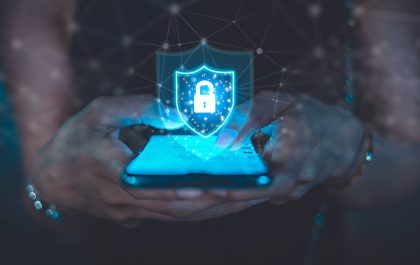Imagine an online world where the internet can interpret your commands and deliver precisely what you ask for regardless of your input mode! An internet that is tailor-made for you and your needs! You could call it the turning point in internet technology as we know it. It is the next evolution of the World Wide Web, Web 3.0. It provides a data-based logical Web.
Web 3.0 employs a machine-based understanding of data to provide users with an increasingly intelligent and connected Web experience. To be honest, we do use some applications that are early users of Web 3.0. But we will realize the full potential and experience Web 3.0 only after it is fully embedded in their web infrastructure by the IT infrastructure support desks.
Table of Contents
ToggleSo, What Exactly Is Web 3.0?
It is the third-generation internet and is the upcoming evolution of the World Wide Web. Apps and websites will be able to process information in a smarter and more human manner using technologies like Decentralized Ledger Technology (DLT), Big Data, Machine Learning (ML), etc. The primary objective of Web 3.0 is to develop a more intelligent and connected web experience for all its users. Data in Web 3.0 will be interconnected but in a decentralized way, making it more interactive and dynamic.
How will Web 3.0 work?
Web 3.0 will redefine the web experience of users by using artificial intelligence and blockchain technology. This will ensure democratization across all aspects of your internet experience. Data is stored and securely distributed across many devices in Web 3.0, rendering centralized servers completely redundant. Additionally, users and machines will be able to interact using data. For this, the programs need to be written to understand information, both contextually and conceptually. This is where AI and a semantic web play a pivotal role.
Web 3.0: A Dynamic Web Experience:
Web 3.0 leads us to a more dynamic, intelligent, and interactive web. The web has evolved to give us a more human-like interaction between users and machines using data, value, and other counterparties. This is done via a network of peer-to-peer networks without any third-party involvement. The result is a privacy-preserving, humancentric web experience.
Web 3.0 is leading us into a changing world. Users like us are at the tipping point of an experience that will transform our lives forever.
1. Artificial Intelligence and Semantic Web: With the use of the Semantic Web, web technologies will improve drastically. The web can share, generate and create content through search analysis. This means that it will understand the meaning of what you are searching for instead of just searching for the keywords or numbers. Combining Artificial Intelligence (AI) with the Semantic web will ensure a better understanding, quicker searches, and relevant results for the users. So, by using it, computers become more intelligent and able to provide us with an easy and more satisfying web experience.
2. 3D Graphics: It provides crystal clear and mind-boggling 3D graphic representations of almost everything you can imagine. Web 3.0 is set to change the shopping experience for us. Sellers can entice us by displaying their products in context, ranges, etc. Ikea-style showrooms and 3D product models will dominate eCommerce. This will also bring the world closer and promote global trade.
3. Connectivity and Ubiquity: Information is more connected due to the use of metadata in Web 3.0. This leads to a new level of connectivity for the user. It allows us to leverage all the available information on any given topic. It means that the way we search for anything online will change. Furthermore, this will lead to a change in the way businesses respond to queries. Web 2.0 has already ensured that the internet and its content can be accessed from anywhere at any time. The growth in IoT devices and Web 3.0 is set to take the ubiquity of the internet to a different level for its users.
4. Blockchain: the use of blockchain technology protects our data and ensures privacy for the user. Blockchain aims to do away with the barriers between internet users. This means that brands and their potential customers can interact with each other and share personal and sensitive information in a secure environment. The use of blockchain also means the use of robust security protocols. This, in turn, will protect brands and their customers from hacking and cyber-attacks.
5. Decentralization: Web 3.0 aims at creating peer-to-peer networks and eradicating third-party involvement. This means we can log in securely and use the web without being tracked. It also means that our data is protected.
Also Read: 8 Project Management Software Benefits for your SME
Web 3.0: A Changed Way of Life:
Web 3.0 is no longer a dream. It is a reality and is heralding us to a new and united online ecosystem wherein content, collaboration, and connectivity are the keys to survival. The new internet experience will be more personalized, human-like, and a customized browsing experience. You can also build your own ecosystem with the help of Atlas Systems. The experts here will provide your IT infrastructure support and help to upgrade and make the necessary changes to adapt your marketing systems to be compatible with them. This will help you and your brand get all the benefits of 3.0.
Refining your keyword and SEO strategies, personalizing content, acquiring complete control of your data and assets, and improving your data and privacy protocols are some measures you need to look into to equip your company for Web 3.0.
Shashi Teja
Related posts
Hot Topics
Everything You Need to Know About a Savings Plan in 2025
A savings plan is a financial tool that offers the combined benefits of insurance & growth. This ensures financial security…
Mobile Threat Defense: The Silent Shield Behind Every Secure App
Mobile apps are found everywhere in India’s rapidly developing digital landscape—from banking and online shopping to healthcare and learning. And…



